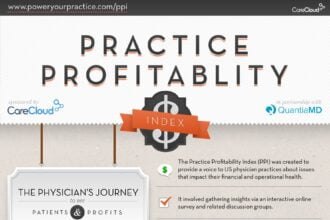“In January 2009 Blue Cross Blue Shield of Massachusetts launched a new provider payment system called the Alternative Quality Contract that exemplifies the type of experimentation with novel payment models that the Affordable Care Act encourages. The Alternative Quality Contract is a modified global payment model in which annual payments to medical groups are linked to a per member per month budget.” Today I will review a paper by Chernew et al. (2011) describing BCBS’s Massachusetts initiative. The Alternative Quality Contract is a modified global contract. Participating provider groups–which range in size from 72 physicians to 1,300–share in cost overruns (or savings) above (or below) the target. Rates are set at the initial BCBS reimbursement levels, but reimbursement growth rates slow over time. Those with high baseline costs generally receive lower growth rates. Groups are paid on a fee-for-service basis which are then debited against their global budget. This gives each group an incentive to steer their patients towards lower cost specialists as fees across BCBS in Massachusetts vary widely. The Alternative Quality Contract also has several means of mitigating risk:
- Risk Adjustment using Diagnositc Cost Groups (DxCG)
- Parital risk sharing (between 50% and 100%)
- Mandated reinsurance for high-cost cases (where a patient’s medical expenses exceed $100,000)
- A “unit cost corridor” which increases or decreases the global budget if BCBS negotiates higher (or lower) fees with providers than originally projected
Quality measures are also incorporated into the payment. Groups can earn bonuses up to 5% based on their performance on 32 care measures for ambulatory services and up to 5% for their performance on 32 measures of hospital care. The standards are based on absolute rather than relative performance using a 5-tiered scoring system. “The highest target (gate 5) is set at an empirically derived score that available evidence suggests can be achieved by an optimally performing physician group or hospital. Gate 1 is set at about the network median for each measure. For each measure a “gate score” is computed linearly based on where the group scores relative to the gate 1 and gate 5 thresholds. For example, if a group’s performance is halfwaybetween gates 1 and 5, the group gets a 3 for that measure. If it is 75 percent of the way from gate 1 to gate 5, the score for that measure is a 4. The gate scores for each measure are then summed.” In this system, outcome measures are given triple the weight of process measures, although there are 27 process/patient experience measures and only 5 outcome measures. To further quality and cost control, BCBS uses data reports to examine unexplained practice pattern variations that are “both clinically and financially important.” One big advantage of this system is that because the growth rates for global budgets are set in a five-year contract, premium increases are much more predictable for businesses. Difference from Medicare Shared Savings Program Here are key differences between the Alternative Quality Contract and Medicare Share Savings programs.
- The BCBS groups bear significant financial risk if they do not meet their targets. Medicare ACOs may not bear such a high risk.
- BCBS enrollees must be in an HMO or POS to quality for the Alternative Quality Contract, whereas most Medicare beneficiaries are in fee-for-service programs.
- The Alternative Quality Contract uses negotiated payment rates and budgets.
Is the Alternative Quality Contract the wave of the future? Only time will tell.






